[Steve Swensen, Director of Conservation, Aldo Leopold Foundation]
Welcome, everybody. My name is Steve Swenson. I serve as the Director of Conservation at the Aldo Leopold Foundation over in Baraboo. My pleasure to introduce our first speaker, who is going to talk about oak hickory woodland ecology.
Brad Hutnik is a forest ecology and silviculturist with the Wisconsin Department of Natural Resources. He works out of Madison. Along with silviculturists Greg Edge and Colleen Matula, Brad Brad serves as statewide forest ecology and silviculture programs with responsibility for developing, implementing, monitoring, and evaluating both programs and policies for our state.
Brad graduate with a bachelor’s degree in forest management from the University of Wisconsin Stevens Point University Of Wisconsin-Stevens Point in 1997 and, after that, interned with Consolidated Papers, now NewPage. He worked as a Lake County Forest Preserve District Forester, worked for a forester with Clark Forestry in private forestry, and served as the Lower Wisconsin State Riverway Forester with the DNR before becoming the silviculturist for 10 years. He lives in Spring Green, Wisconsin, with his wife and family and enjoys gardening, hunting, and fishing. Brad, welcome.
[Brad Hutnik, Forest Community Ecologist, Wisconsin Department of Natural Resources]
Thank you, Steve.
Good thing you didn’t say turkey hunting, so people won’t ask me turkey hunting questions.
So, today we’re going to talk about oak ecosystem ecology and maybe try to look at the past and some things from the present to give us clues about how we might try to manage oak sustainably in the 21st century.
So, what we’re going to do is we’re going to actually talk a little bit about what is sustainable forestry just so we’re all on the same page. We’re also going to talk about Leopold, intelligent tinkering and trying to keep all the pieces, how we might need to think about that in a different context today. We’re going to look at the ecological context of oak, natural communities in Wisconsin, the role that fire played in maintaining these communities, and then we’re also going to look at the status of Wisconsin’s oak resource right now.
Well also, then take a just a really brief tour of the oak communities that we have. So, as a forester, we’re used to working with the forests, but we have lots of other things. We have the oak savanna, oak woodland, and then southern dry, dry mesic, and mesic oak forests here in southern Wisconsin.
And at the very end we’re going to have our upshot. We’re going to put it all together, and we’re going to look at trying to use what we know about the disturbance ecology of oak and some other and some other things that we learned through the presentation to look at one example where we try to integrate this all together. Something called the shelterwood-burn technique, which you might want to consider trying if you’re thinking about oak management.
So, what is sustainable forestry? There could be a lot of debate about what sustainable forestry is. Luckily for us, the state legislature has defined this. So, in state statute 24.4e, we have sustainable forestry defined as: “the practice of managing dynamic forest ecosystems to provide ecological, economic, and social benefits for present and future generations.” So, we’re taking a long-term approach. We’re not looking at simply sustainability of an individual product or this is going to be a long-term product, and it’s careful not to say things like boards or pulp or paper or things like that. We’re really talking about, holistically, all of the things that forests can provide.
Sustainable forestry practices, however, are really based on three things, and then they’re compatible but they’re reach equally important. And these are landowner objectives, so basically making sure the landowner, what they want to do is compatible with the property; the capability of the site, meaning that what you’re proposing actually can be done on the site; and scientifically sound silviculture. So, all of these are important. They’re actually equally important. If one of these falls apart or one of these falls off, then we basically have a really hard time. We fall out of what we would call sustainable forestry.
Oops [Changes slide]
So, I think we’re in Wisconsin. Basically, I think it’s a prerequisite that every presentation should have a quote from Aldo Leopold, right? So, Aldo Leopold, and and basically critical to what we’re going to talk about here, has a famous quote from “Round River” where he basically talks about “to keep every cog and wheel is the first precaution of intelligent tinkering.” And I think we can all agree that that’s basically the one of the caveats of what we want to do with land management.
And, basically, that’s just highlighting that point right there.
But what if some of those parts are missing? What if our role or our idea of restoration has actually expanded? So, with Leopold, I think we would actually be taking a look at something slightly different today. What Leopold talked about was maybe what we would think of as a structural restoration. Right? So, basically we’re going to put all the pieces in place, and we’re going to basically have it as it looked prior prior to settlement. So, think about putting plants back into a particular place or making the trees in a certain arrangement so that they’re able to satisfy the arrangement they would have had historically. If he were here, he’d probably also I believe he’d be talking also about the function. So, basically, you can take a look at historic disturbances and degraded sites, and we basically have this kind of push and pull between what the structure should be and what the function of those sites actually is.
So, if some of the cogs and wheels are missing, and you can think of it as that way right now. So, if the first rule of intelligent tinkering is to keep all the pieces, what if you don’t have all the pieces? Right? We’ve got lots of pieces that are missing. What if you actually have new pieces thrown into the machine? So, we have new pieces being thrown in all the time with invasive species, non-native species, species that are adjusting their range and moving into different places. So, probably we need to think about incorporating that function. So, another consider consideration in intelligent tinkering is to know what the machine is supposed to do and how it works. Alright?
So, what are the fundamental processes that drive the machine or drive the processes that form our landscape?
So, in that context, let’s take a look at how and in particular we’re looking at oak today let’s look at how oak got arrived or was formed prior to settlement on our landscape.
Oak, in general, as a as a genus, is essentially a southern a southern distributed genus, meaning that there aren’t a lot of oaks that are further north from Wisconsin, but there are quite a few oaks to the south. In fact, oak has been gradually moving north for for a long, long time.
Oak is really, basically also adapted to maybe what we would think about as a range of natural disturbances. So, we can think of natural disturbances as being things that basically shape the the pattern and distribution of forests on our landscape. And they’re really the clue to what we have today, what we had historically, but what we might have in the future on these sites as well.
If we know a little bit about the disturbance of our site, that’ll tell us about the trajectory, the resilience, the productivity, and the stability of our stands or landscapes for oak here in southern Wisconsin.
What we know when looking at oak and looking at a lot of research that’s been done in Wisconsin and other places in the United States, we know that fire played a critical role in helping shape and define oak natural communities in Wisconsin. Fire, in combination with other disturbance factors, was the major disturbance factor determining what our oak forests look like here in the driftless area. And it really, because of the way it worked and how it how it favored certain species, how it didn’t favor other species, it it really determined the composition, the structure, and the pattern and extent of oak forests across southern Wisconsin.
So, you’ll hear talk about oak savannas, right? And that’s a thats a structure to an oak stand. An oak woodland is one and an oak forest as well. Fire would have played a key role in each of these.
Whoops.
If you’re familiar with some forest habitat type classification here in Wisconsin, and foresters and maybe a lot of landowners who have who have forest management plans, you may see things in there which talk about a forest habitat-type classification or a Kotar classification. You might be familiar with this chart for southern Wisconsin. It’s really busy, right? And I don’t expect everybody to be able to take a look at this and immediately grab it. But what you can see at the very bottom is this is the story of our forests in Wisconsin, in Southern Wisconsin.
And they’re actually quite simple in the beginning. If you look at the bottom box that says oak savanna or opening and a circle basically showing recurring fire. And with recurring fire, all of these sites basically were maintained in oak. Kind of a subcanopy or a subclimax not not allowed to go to maybe some later successional species but maintained in something like oak.
And so that basically kept going, but with fire suppression or a change in the natural disturbance regime, which we mentioned earlier being fire, then that would have allowed a lot of other types of communities or or variations on oak to persist or become more common across the landscape. And so you can see this actually, if you take fire out all the way through, you come up into a climax forest, or what what would potentially be a climax forest here in Southern Wisconsin, which would be a sugar maple-dominated dominated mesic hardwood forest.
So, fire played this critical role, and it helped shape these sites, but how big a role how how common was this? How frequent was it? Well, sometimes it’s hard for us, when we look at our forests, when we walk around and try to get a feel for how big these would have been; in doing research on this prior to settlement, four to seven million acres of Wisconsin may have burned every year in some type kind kind of fire. Now, these may not have been the most intense fires. These could have been light surface fires, but they basically wouldn’t have stopped the way we think of prescribed fires. Right?
Prescribed fires are basically defined by breaks and defined by opportunities to burn. Wildfires on the landscape would be defined by the opportunity to burn. So, the only thing putting this out would be something on the landscape, a landform, a river, a hill, a north slope that would stop it, or the availability of fuels. So, weather conditions, things that things like that might change the fuel matrix that you’re looking at.
After settlement, you might think that there was this pre-settlement we burned, after settlement we didn’t burn, but, in fact, if you look at the data, a lot of Wisconsin still burned after settlement because of farmers, other people recognized that if they burned the woods, they could increase the forage the forage availability or the quality of the forage in these sites for cattle. And so, you see a lot of woods that were grazed historically here in Southern Wisconsin and burning was a critical part of that.
So, if we think of it that way, we have this fire on the landscape, it’s really present all the time, and only in the last 150 years that we’ve kind of really started to slow down and we’ve had this change in what our landscape looks like, we could start to maybe think about our view of natural maybe not quite being right. In fact, from a historical perspective, it may be more accurate to regard the absence of fire from the landscape as unnatural rather than natural.
So, our perspective on the landscape, because we’re rather short-lived compared to, say, white oaks, is that white oaks might be used to something much different for a fire regime. We’ve altered it and so our view of what’s natural probably isn’t what’s natural to a white oak or something that lives a lot longer than us.
So, that’s the background on how we got some of the oak and what formed the oak forests that we have. Currently, we have kind of the the end result. We had oak forest prior to settlement, we settled, we changed the distribution of of natural disturbance, so we changed how things actually work. So, now the oak forest cover type so now, historically, we may have had a lot of savannas and woodlands. Now it’s predominately forest. And this cover type encompasses approximately 3.4 million acres in Wisconsin, approximately 20% of our total land or total forest cover, and we traditionally think of it as being a valued timber species and perhaps for wildlife, if you’re deer hunter or you’re a turkey hunter, you might be looking at it as massed production as well. But, really, from a much more, from a larger standpoint, it’s a keystone species in Southern Wisconsin for all the other species that really depend on oak stands, on oak trees themselves.
But so, that’s the good news, right? We have a lot of oak. We’ve had weve had processes in the past that gave us the oak we have now. We have a lot of oak still, but there are probably some challenges and some things that we might want to think about as we go forward looking at what’s going to happen to our oak resource.
Number one, we have an unbalanced age structure. That means that we don’t have a lot of we may not have a lot of young and we may not have a lot of really old but we’ve got a lot of oaks that are in between. And that’s going to be a problem, both for timber production but also for wildlife or habitat for other wildlife species. Regeneration has been problematic for probably 40 years here in Wisconsin or more. And we’re really only regenerating oak on the driest of cover types. So, think about the places where there’s the least competition. Oak is seeming to do well there.
Currently, only 6% of our oak is in the one- to twenty-year-old age class. So, we don’t see enough regeneration on the landscape. And most of ours, as I stated before, is mostly in that middle age kind of oak range. Or in the middle it’s a middle age range of 40 to 80. So, with this we can start to see that where we may have had oak historically across a wide range of sites, it’s really being restricted now to maybe the dryer sites where things are easier for oak to reproduce and to compete with other species. And so, we’re seeing this shift from rather good sites and good quality sites to maybe what we would consider poor quality sites if you’re thinking about it from timber.
This graph just displays, basically based on forest FIA data from 2011, what the distribution of ages and acres is for oak in Wisconsin. And it also breaks it down by by ownership. If you can see, the blue really dominates this. That’s private ownership. So, private landowners in Wisconsin by far capture the – have the most have the lion’s share, 85% of our oak resource, under their control. Through the rest of them, the county and municipal, the state and other federal and national forests, rather play really play minor roles, all things considered. You can also see that uneven age distribution of ages. So here, at approximately age 40 to approximately age 80, you can see that large bump in basically what our oak resource looks like right now.
Historically, this probably looked a lot different. Historically, we probably had a fair a rather, almost a level playing field here where we had a lot of young oak oak stands and we had a lot of much older oak stands than this.
What we’re also seeing in Wisconsin that could be a challenge for us is we have a lot of no management or mismanagement. And this is leading to conversion of some of these sites. So, the absence of disturbance, which can be associated with management, may lead to things like convergent, to more shade tolerant species. If you own an oak stand, you might see a lot of sugar maple coming in or red maple or central hardwoods or other tree species that are really taking the place of oak in that site.
We also see the loss of herbaceous biodiversity, and that has implications that kind of trigger other things. So, insects could be affected by that. Bird populations could be affected by that. It goes on and on. So, it’s one of those keystone things that kind of has multiple or ripple effects as that change occurs.
This could also lead, if we if we think about this too, thinking about that change and what these cover types are, especially with the hills here in southern Wisconsin and we’ve seen a lot of erosion recently, but this also could lead to increased soil erosion. If we’re seeing a loss of diversity in the herbaceous cover type or a lack of herbaceous cover period, it then can lead then to a loss of some soil nutrients, and it can also open the door for non-native invasive species to get established in some of these sites. So, these things really can be kind of a build upon each other. It’s building blocks, on upon the other, that kind of create the problem that we see in many sites today.
If you look at stand data and sometimes you, as managers, will be looking at information that comes from your forests, we can even see this just looking at regular stand information. One way we can see this is this is an example from Devil’s Lake State Park this is a stand of beautiful red oak that we would and I believe the park managers really want to try and keep this as red oak. The blue is that that even aged hump of rather old oak that averages about 17 to 19 inches in diameter, which is a very nice oak stand. But you can see that transition that I talked about, those other species, sugar maple, red maple, things like that coming in. If you look at the backside of that hump, you can see in the red, and that’s basically right here, you can see the red maple basically taking its place. So, this is what an aged or a species composition transition looks like in stand data.
If you had this for your stands, if you haven’t done anything basically to avoid this, this is probably what your stands look like as well.
So, our challenge in Wisconsin, then, is to, as our oak matures, as we recognize these problems, is to successfully regenerate our stands. If oak is important, we really need to try and think about how we’re going to perpetuate oak in our landscape here in the driftless area. And so, as foresters and as landowners, we need to understand the ecology of oak. Look at how we got the oak that we have. We need to employ strategies for regeneration across site types, both rich sites and poor sites, and we need to explore improving operational techniques for regeneration.
That means we don’t have all the answers. If we had the answers, we’d be regenerating it right now. So, now we need to think about – what the things we can do, what are the things we can tweak, in order to see what works and what doesn’t work.
So, what I’d like to do now is step back and take a look at you guys have oak stands; you might have something that looks like one of these. And some of these will be common; some are going to be rather uncommon. And we’ll go fairly quickly through this so we can get to maybe how we might manage for some of it.
So, Wisconsin’s oak community is really a continuum of species. And we can really think of this as a prairie forest complex, where oak basically occurs across sites from very, very open to very closed depending upon the disturbance that occurred in its landscape. How much fire it probably had around it.
So, you can start with the most open of all the things that we have, and that would be our oak savanna or oak openings. And this is basically an oak dominated community in which there’s less than 50% tree coverage. So, think about wide open trees. Think about trees that are open grown. Right? Oak in open architecture, branches that go out. The trees may not necessarily have to go up because they don’t need to compete with other trees around them. There is no other tree around them, right?
So, basically, these are the ones that youd look like look like trees that you see in pastures commonly right now, or when you’re walking through the woods and you see that lone tree that has the the limbs that come out to the sides like this. You know, that was probably in the open at one time in the past.
Ground layers on these sites were probably similar to had elements of both prairie and forests. So, we’re seeing that continuum of species that are kind of working through from a more forested condition. You’ll have species that will still persist, and you’ll see the grasses and other herbaceous species from prairies mix into this site as well.
But note so, I’ve mentioned this before. So, thinking about the sites that we’re working with and sites that you have, it’s probably unlikely, unless you’ve done a lot of management to have these, it’s unlikely you probably have an intact one right now or at least one that qualifies as a savanna, because approximately 0.01% of Wisconsin’s original oak savanna remain today. And we’ll talk about why that would be in just one moment.
So, sliding down the continuum, if we think of that as being the most open condition, as those forests, as those stands that are to accumulate more trees, now we get into something called an oak woodland. And this is going to be an in between kind of a really forested situation where you have trees and lots of structure in the understory. This is basically that oak oak savanna but probably brought in much, much much more dense than what you would see in a savanna.
So, this is basically going to occur across a range of sites, depends on how much disturbance you have. The trees here aren’t open grown. So, they’re going to have more of a forest grown structure, but they’re not going to be quite as dense. So, it’s going to be from 50% to probably, I think, 95% crown closure within these stands. The one difference between this and an oak an oak forest is that this still has fire playing a dominate role in the understory. So, when you walk into these stands, as you can see in this stand right here, really open. You can walk and you can see things in these understories for quite a long ways away. It’s going to be a little different then from what we’re probably seeing and what you guys have, and those are oak forests. And so, in the classification of John Curtis or other people, these would be southern dry, dry mesic, or mesic sites. So, this can be across a wide range of sites.
And, essentially, we can think of this as where we’ve taken fire out of that mix or we’ve limited fire a lot compared to what we had historically. So here, again, the trees aren’t open grown. Here we probably have pretty full canopy closure. Our composition and species will be more diverse because we have species here that might be not adjusted to fire. They can persist in these sites. And we may have a dense, woody understory. So, you can think of lots of shrubs occurring in these sites. In fact, some of these would have surrogates where you’d see a lot of invasive shrubs in here as well.
Note, and this is where I kind of think that if you might have what could qualify as an oak woodland or oak savanna, but in the absence of disturbance we actually get, when these things succeed, they turn into oak forests.
So, thats a little bit about that background as well. If we were to step ahead, though, if we had a time machine and we were able to go forward, we might also be concerned about not only what we how we got to where we are right now but maybe where these are going. One place we can actually look for information on that is the Climate Change Tree Atlas online. And you can do a Google search on that, and there’s some really good information. We have high and low emission scenarios that talks a lot about what potential range might be for these species, and it’s informative for looking at some of these things.
But, I think, as you see on some of the when you’re looking for financial services, past performance is not necessarily an indicator of future results. So, use this as not necessarily to define what you’re going to do in the future but just as something you might consider as a part of your risk management when managing your stands.
So, let’s put it all together. Let’s try to take that that historic disturbance and decide how that would inform our current management. So, maybe how could we look at tools that would come out of that disturbance?
So, first thing I think we need to recognize is that if we look historically at how we got the oak stands we have, it was really a process. Right? It wasn’t just an event. So, when we think of oak regeneration harvest, we look at a five-year period where we’re going to get regeneration. For oak forests historically, whether it be a savanna, a woodland, or even some of the other, that all along the continuum, this really would have been a long-term process. And so, with that process, we need to maybe take a longer term approach to what we’re doing as well.
The other thing to keep in mind here in putting it all together is that if we take what we know, what we just discussed about the ecology of oak and we’re basically, and we know the sites we’re working with, as long as we stay true to the silvics of oak and how it responds to these, there are a lot of different systems that we can use to try and tinker with oak and try and get more on the landscape.
One technique that would that might work and that actually seems like it it mimics in some ways probably that settlement condition or some of the processes that we’ve been talking about, is the shelterwood-burn technique developed by Patrick Brose and others probably in about 2000. It’s been tried in the central United States. We’ve done a little bit of it here. The Northern Highland American Legion State Forest has been doing timber several timber sales and incorporate this into it. And it’s showing a lot of promise.
So, this is an example of a picture that Patrick Brose took that basically shows what a a this is an example from Virginia where they’ve been doing this a little bit longer. It shows an example of a forest where you can see a fairly dense understory, which would not be historically appropriate on a site like this. With the shelterwood-burn technique, you basically start with the stand in the upper left-hand corner that has multiple sizes and distribution of of diameters, not necessarily ages, but diameters within the stand and species.
The first step would be to cut this to a 40% to 60% canopy cover, mimicking maybe what we saw with some of our shelter oak woodlands, kind of more open conditions and oak stands. And we basically let that if you go down to to point number three, you can see that we just let this grow. The idea is that we get some oak to establish, but we get a lot of other things to get established in these sites.
After we let this grow for probably two to four years, then we burn this and we burn it rather hot with the intent of top-killing all of the trees in the understory. When we do that, we basically set it up to take a we basically let it grow another two to four years and then look at that regeneration pool. If we have sufficient regeneration, then we can basically decide if we want to take the overstory off, start that new stand, we could move it maybe to a two-age stand, or we could create savanna or an oak woodland or whatever we want to do with this. But if we don’t have the regeneration, we simply go back, if we were at 0.5, we can basically slip back into four. Burn it again, see if we can get a little more oak this next time. That’s where the process of oak regeneration really comes into play.
So, this has shown promise in a lot of places. So, this is an example of what that stand might the example stand we were just looking at would look like with a 40% to 60% shelterwood harvest. Much more open in the in the canopy, trying to initiate as much regeneration as possible, hoping that oak is part of that regeneration.
And this will get rank. Right? So, you’ll have a lot of regeneration, it’ll be hard to wade through, and that’s exactly what you want. The goal is you hope that basically you’ve got some regeneration mixed into that.
Then we would burn it. Now, the difference here with the burn is that our goal is to top-kill everything that’s an understory stem in that stand. We don’t want to burn it hot enough to endanger the trees in the overstory because we still need them for the process of of creating acorns and and getting to regeneration if we need it. So, hot enough to top-kill anything in the understory, but not hot enough to kill anything in the overstory.
As we burn that, we can see that if we increase the intensity on that fire, and you dont wanna and intensity is a relative thing. But oak and hickories and some of the species that we would associate with these sites do rather well and can resist or be resilient to that fire versus things like red maple and the example of the southern United States, yellow poplar will basically not do well with that. So, you open up. If you can burn it, you’ll actually get more space for the species you want.
So, I talked to Patrick Brose one day, and I asked him about this picture because, basically, this looked like a a stand that we might see around here with mayapple in the understory after a burn that we see in the spring. He indicated, though, that this was correct in the notes for this picture from the from the Bugwood.org site that, yes, this was oak regeneration in the understory.
So, this can have the potential for being rather dramatic, although he also said too that basically we take pictures like this when we have dramatic results. So, most of the time you’re not going to see dramatic results like this, but it’s still useful to know that it does work.
So, notes on this and things to think about when doing something like this is that mechanical scarification might be better for trying to establish oak regeneration. Here we’re really giving what what what other research has shown is that fire actually plays a much better role in giving oak, giving if it’s already established, giving it a leg up on some of its competition.
Contrary to what we saw in that picture, you know, oak regeneration is never uniform across sites. So, it’s going to be spotty. We just hope that we get enough of it, and we’d aim for something like 70% coverage in our stands. If we had that, life would be great.
As we mentioned before, one burn may not be enough, and it’s believed that you may have to do this two or three times at two- to four-year intervals in certain situations to get enough oak regeneration. So, I hope this primes the pump. There are lots of things we can do. Hopefully it gives you guys something to work with and maybe think about other things that you might want to try as well.
So, questions?
Yup, Rudy?
[applause]
Search University Place Episodes
Related Stories from PBS Wisconsin's Blog

Donate to sign up. Activate and sign in to Passport. It's that easy to help PBS Wisconsin serve your community through media that educates, inspires, and entertains.
Make your membership gift today
Only for new users: Activate Passport using your code or email address
Already a member?
Look up my account
Need some help? Go to FAQ or visit PBS Passport Help
Need help accessing PBS Wisconsin anywhere?

Online Access | Platform & Device Access | Cable or Satellite Access | Over-The-Air Access
Visit Access Guide
Need help accessing PBS Wisconsin anywhere?

Visit Our
Live TV Access Guide
Online AccessPlatform & Device Access
Cable or Satellite Access
Over-The-Air Access
Visit Access Guide
 Passport
Passport







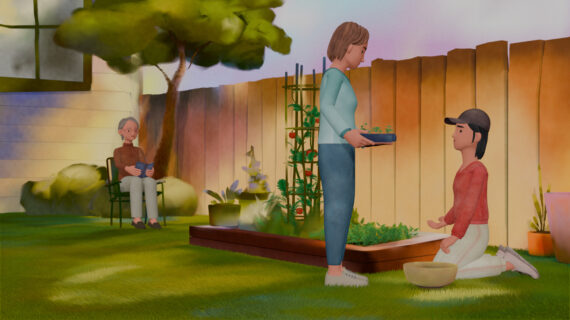

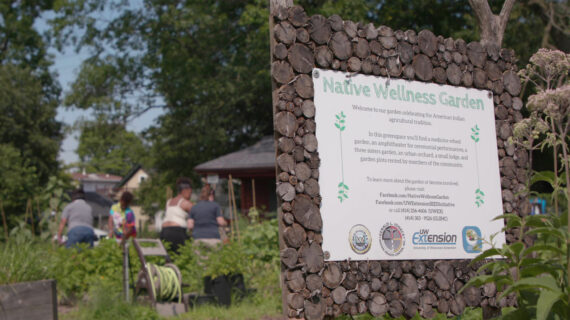

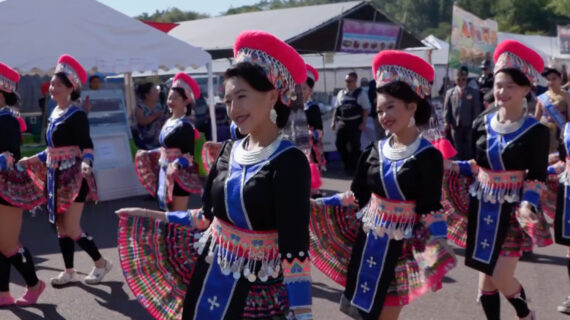
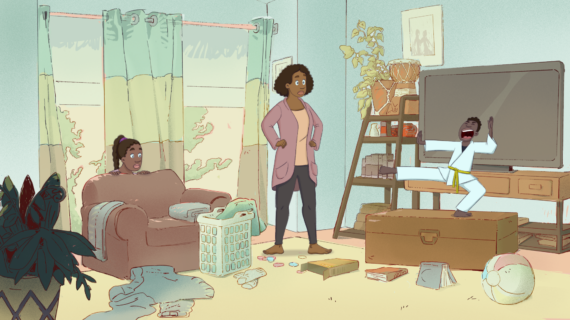

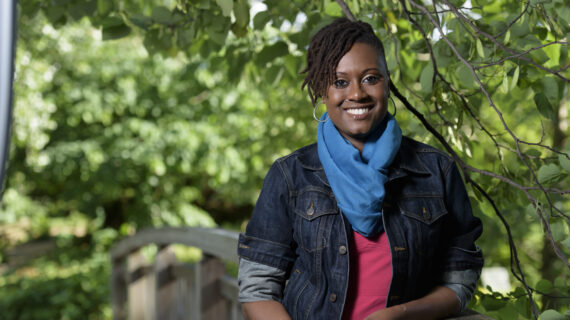

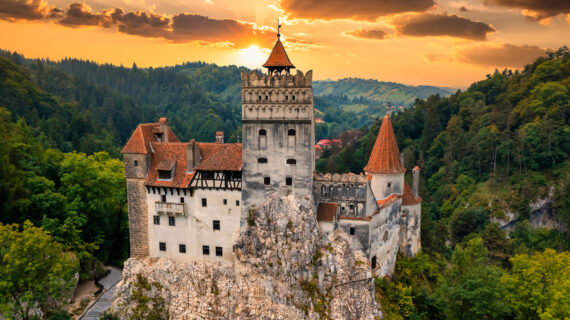

Follow Us